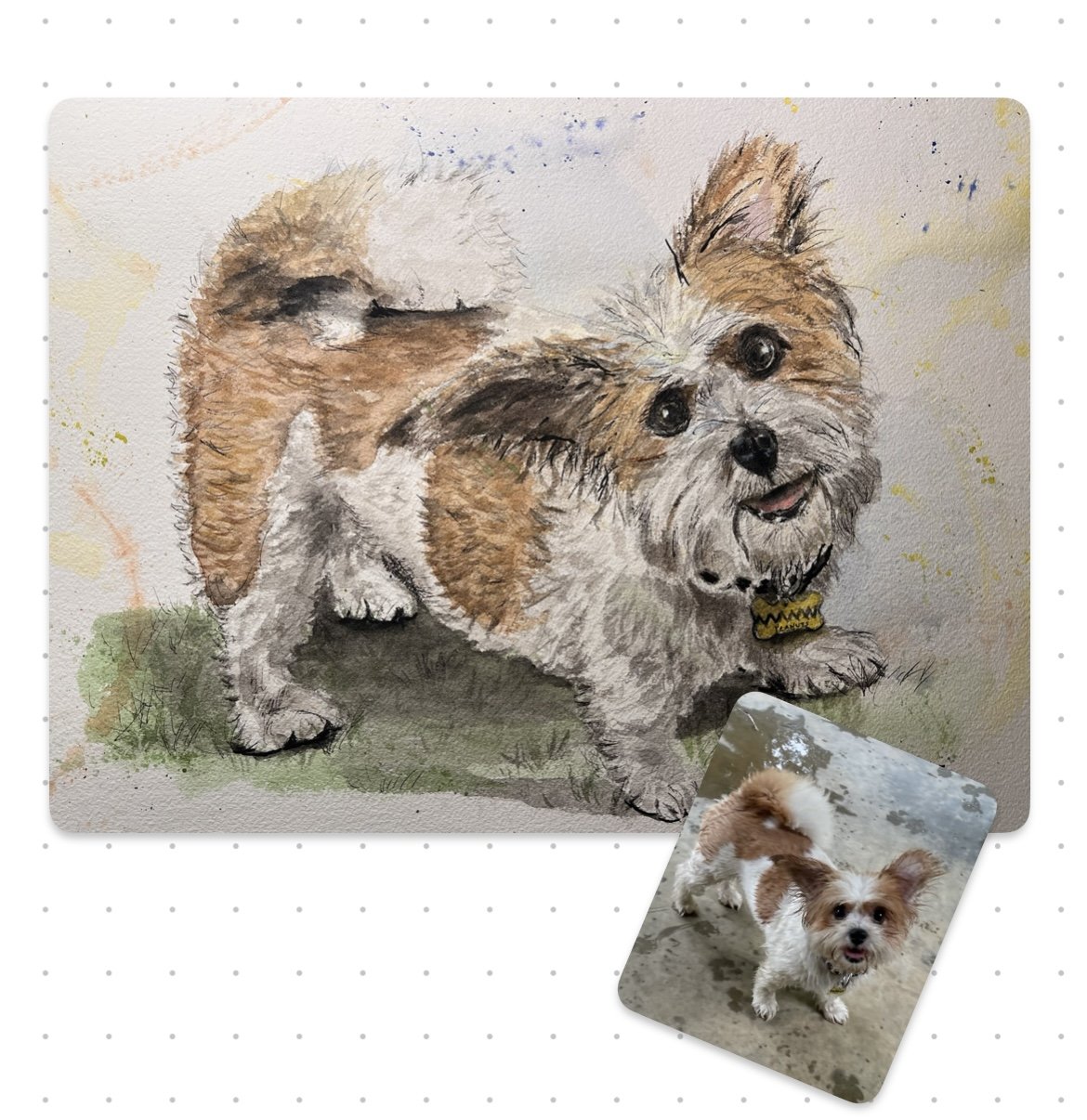How I Work

If old blurry photos are all that are available, please share those and I “might” be able to get enough reference to still create a nice work. I can also turn black and white to color.
Choose the correct size.
Things to consider-
When considering what size painting or drawing to buy, there are several factors to take into account to ensure that your choice complements your space, style, and personal preferences. Here are step-by-step instructions to help you determine the appropriate size:
Step 1: Assess Your Space
- **Measure the Wall Space**: Use a tape measure to find the dimensions of the wall where you intend to hang the artwork. Consider the height and width available as well as the distance from the floor.
- **Consider Other Furnishings**: Take note of any furniture (like sofas, chairs, or tables) that will be near the artwork. This will help you determine what size will balance well with these pieces.
Step 2: Determine the Visual Impact
- **Decide on the Focal Point**: Do you want the artwork to be a focal point in the room or a subtle enhancement? Larger pieces draw more attention, while smaller pieces can complement other elements in the space.
- **Consider Grouping**: If you're interested in a gallery wall or a series of smaller pieces, consider how they will relate to each other in size and spacing.
### Step 3: Style and Aesthetic
- **Match the Scale of the Room**: In a large room, a small piece may feel lost, while in a small room, an overwhelming size can feel claustrophobic. Aim for a size that feels proportional to the space.
- **Think About Height**: Art should generally be hung at eye level, which is typically around 57-60 inches from the floor to the center of the piece. Ensure the size of the artwork fits comfortably at this height.
### Step 4: Consider the Purpose
- **Reflect Your Personality**: Choose a size that resonates with your personal style. If you prefer bold statements, opt for larger pieces; if you lean towards subtlety, smaller works may suit you better.
- **Functionality**: If the room is used for specific activities (like an office or reading nook), consider how the size of the artwork will affect the ambiance and functionality of the space.
### Step 5: Visualize Your Options
- **Use Paper Templates**: Cut out pieces of paper in the dimensions of the art you are considering and tape them to the wall. This will help you visualize how different sizes will look in the space.
- **Try Online Tools**: Some websites offer augmented reality features that allow you to visualize art in your space before you buy.
### Step 6: Seek Feedback
- **Get Opinions**: Sometimes, a second opinion can help. Ask friends, family, or even art professionals for their insights on your choices.
### Step 7:
- **Final Decision**: Choose the size that feels right after considering all the above factors. Trust your instincts and enjoy the process of selecting art that enhances your space.
### Additional Considerations
- **Budget**: Larger pieces may be more expensive, so consider your budget while determining size.
- **Frame Size**: If you plan to frame the artwork, factor in the size of the frame when measuring the wall space and visualizing the piece.
- **Lighting**: Consider how the size and placement of the artwork will interact with natural and artificial light in the room.
By following these steps, you can make a more informed decision about what size painting or drawing will best enhance your home or office space.
What is needed?
Photo References of the subject
Decision on the size of the work
Decision of type of medium.
(watercolor, pen, pencil, etc…)
Patience- Original hand produced art can take time.
I normally work using the FIFO system.
(First In First Out)
If the work is needed for a specific occasion and/or date, please ask to see if I can accommodate before assuming the work can be delivered quickly.
Payment will not normally be due until delivery.
Choose the Right Images for reference.
1. **Select High-Quality Photos**: Choose images that are clear, well-lit, and high-resolution. Avoid blurry or pixelated pictures.
2. **Consider Composition**: Look for images with interesting compositions, perspectives, and focal points that would translate well into a drawing or painting.
3. **Variety**: If you’re sending multiple images, consider providing a variety of poses and looks.
In many instances, one picture usually tells the whole story and becomes the center focus of the work.
Being able to clearly see the eyes is very important.
Phone cameras can now take very high quality useable photos.
The clearer the picture , the more detail that can be delivered in the final work.
Choose the correct medium. Pencil/Pen or Watercolor. Also Pastel pencil is an option.
I find that a nice Pen and/or Pencil drawing gives the work a more vintage, simple, and masculine feel. This could be a nice gift for someone or some space with a low key vibe.
Watercolors are great as well and are the most popular.
Other mediums can be discussed for the future, as I’ve previously worked with oil, acrylic and pastels. Unfortunately, until I can bring my studio back up to my standards, I’m currently only offering the 3 sizes and 3 medium options.
